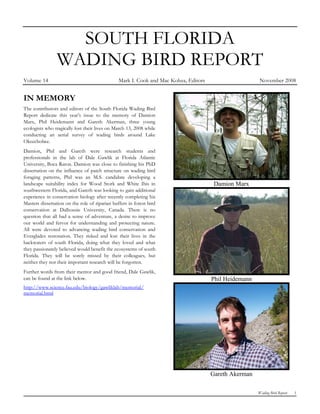This document provides a system-wide summary and hydrology report of the 2008 wading bird nesting season in South Florida. Key points include:
- The total number of wading bird nests in 2008 was 18,418, a 51% decrease from 2007 and well below historical averages. Nesting success was low across the system.
- Precipitation patterns in 2008 with rain events during the dry season led to widespread nesting failures after water level reversals.
- Hydrological conditions varied by region, with WCA-1 experiencing less severe drought and supporting the most nests (71%), while Lake Okeechobee and coastal areas had very poor nesting.
- Foraging bird numbers were

























































